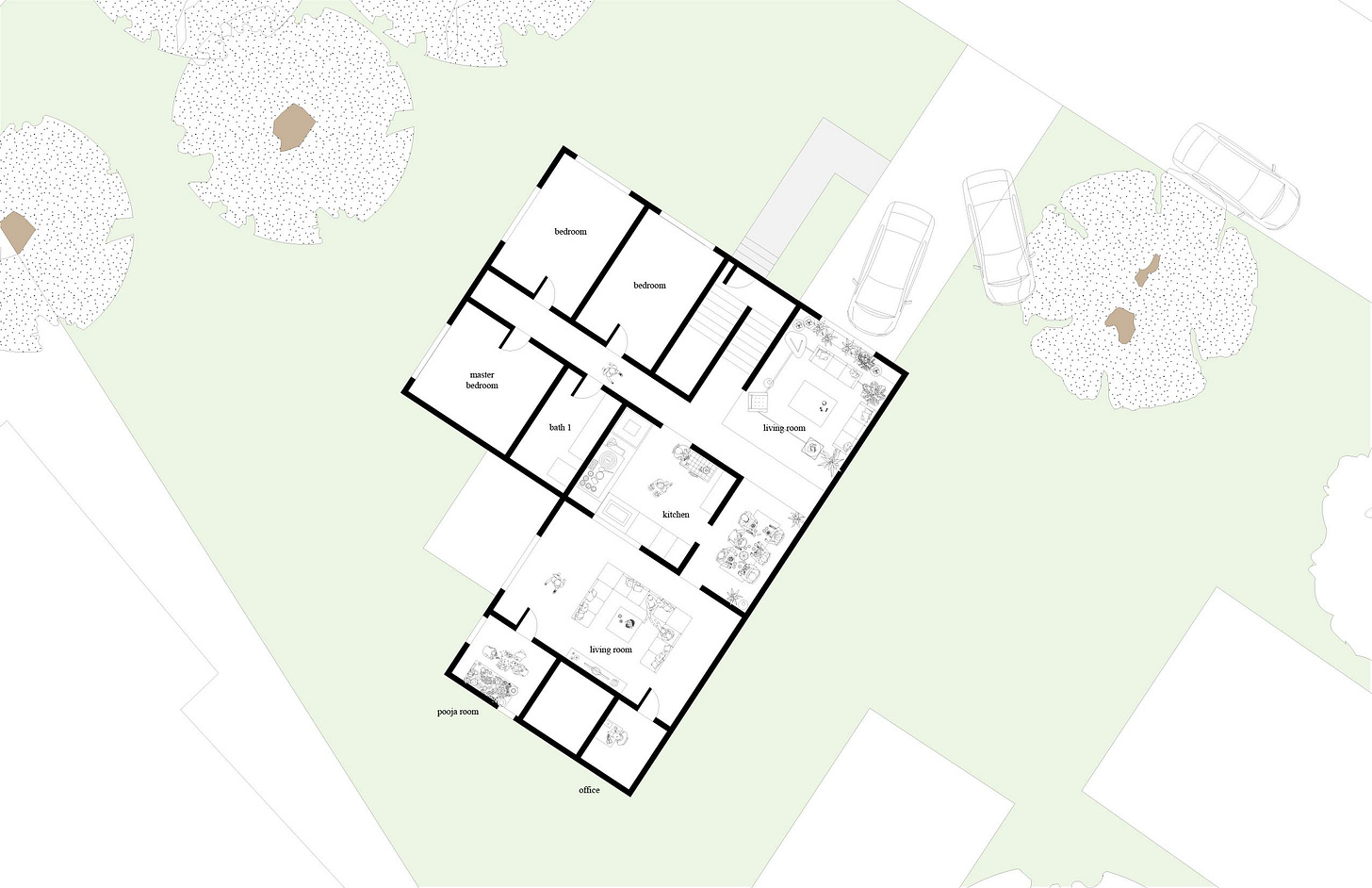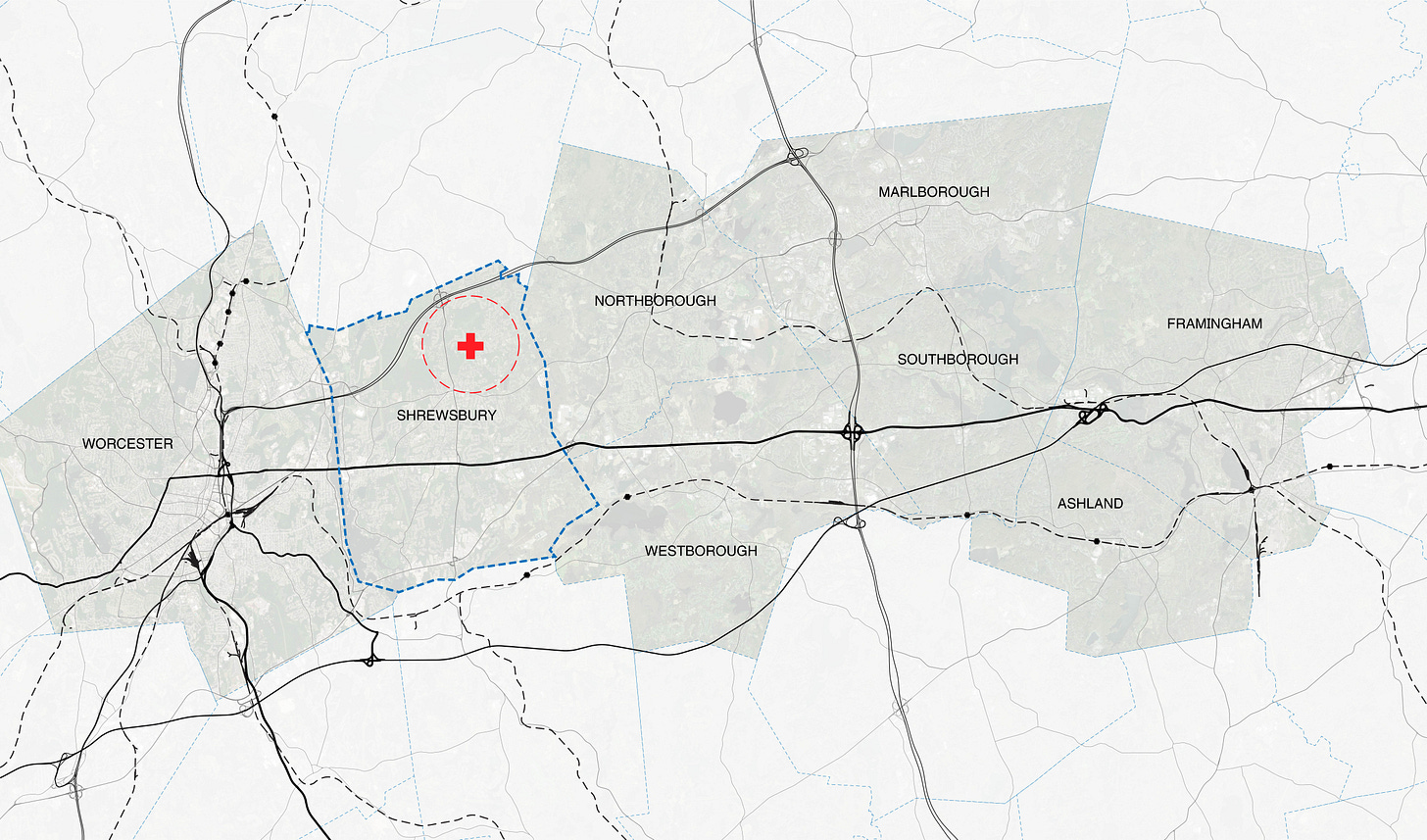As I arrived at the fifty-year-old, split-level style home[1] in Shrewsbury, there were no prominent signs that this was a home owned and occupied by a South-Asian family. It simply appeared as a typical, single-family, suburban home with a dogwood tree and evergreen shrubs surrounded by other colonial-style homes. To my delight, the experience changed as I entered the home. Auntie greeted me at the door, I could smell the agarbatti (अगरबत्ती fragrant incense) and in typical Indian fashion, I removed my shoes before making my way in. This is where I learned the true background to ‘the blessed house’ as I sat and listened to their migration story.
Auntie was born in Kerala and grew up in Bangalore (India). She speaks Tamil and English and has fond memories spending time in Mallan Subramanya temples. Uncle was born and raised in Mysore (India) and was involved in Vedic oral traditions dating back to his youthful days.[2] He is an advocate for Vedic traditions and modern conservation practices. Auntie and Uncle were married in Bangalore and moved to America in the 1970s. Uncle was looking to begin his career in engineering and given that the 1965 Immigration and Nationality Act had been passed in America, the timing lined up with the opportunity presented. Their migration journey took them from Bangalore to Canada, Kansas, and lastly to Shrewsbury, Massachusetts. Having lived in their idyllic split-level home since 1980, they consider themselves semi-orthodox South Indians. With Uncle’s expertise reciting Vedic chants and hymns, he always felt the need to keep a piece of Mysore with him. And while the temple community is also important to them, the importance of daily ritual and private prayer was a more critical gesture towards their heritage. The prayer room, located in the back corner of the house, was converted from a larger living room space. The room faces north-east, which according to principles of Vaastu Shastra[3], is considered ‘auspicious.’ Before the room was built, pooja (पूजा; act of offering devotion and prayer) was conducted out of a small wall-inset that housed various images of deities. The prayer room had tiled flooring and good natural lighting, and in the center sat a tiered shrine with several images of deities with beaded necklaces, sculptures made of silver, diyas, bell chimes, and flowers to adorn the shrine. On days when the family holds significant pooja ceremonies, sixteen rounds of prayer are recited as per Vedic tradition, with milk, honey, yogurt, sugar, coconut, water, banana, ghee (butter), and flowers are given as offerings. Most of the images of deities have come ‘home’ from yearly trips back to Bangalore and Mysore. The collection of deities has evolved over time, and Uncle expressed his pride to continue his mother’s legacy within his ‘blessed house’. The photo of his mother’s home shrine in Bangalore is emulated through their own creations, where the collective memories continue to live on. As Uncle mentioned, some of the memories live on through images of deities, some through miniature statues collected on trips back home, and some in the daily offerings and diyas.
Auntie’s daily ritual practice involves the following steps:
Morning
1. Wake up for the day
2. Walk to the kitchen, and while looking directly at the prayer room, make a silent prayer for the family
3. Make coffee and get ready for the day
4. 30-minute Sloka[4] session, light diyas (oil lamps) in the prayer room
Daytime
1. Make silent prayers throughout the day when needed
Nighttime
1. Conduct prayer
2. Turn out the lit diyas
3. Wash feet before going to sleep
The blessed house carries daily spiritual rhythms that are unique to the South Asian family from Bangalore. The blessed house represents a place where, for decades, Auntie and Uncle have used modes of prayer and ritual to represent their South Asian identities. Though they appear subtly within the interior spaces of the house, they have revealed how a piece of ancient Vedic heritage is appropriating split-level homes in the American suburb of Shrewsbury.
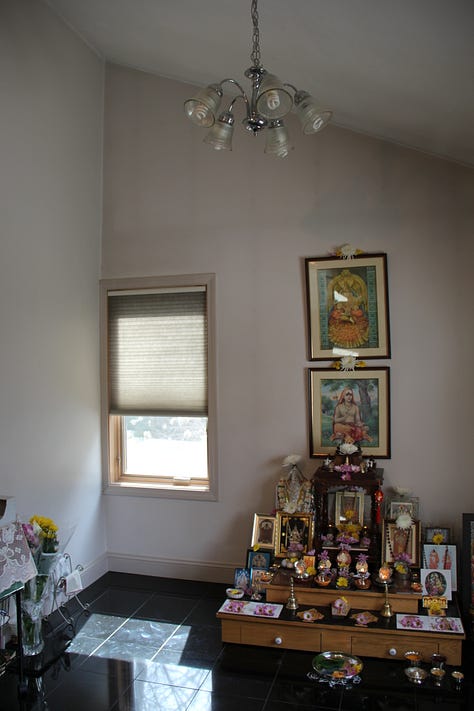
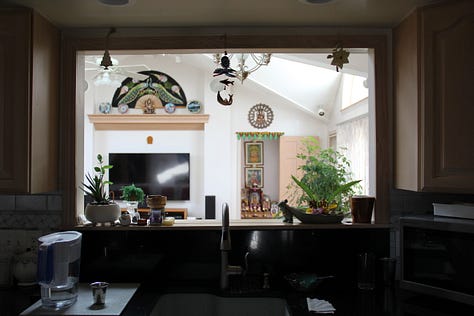
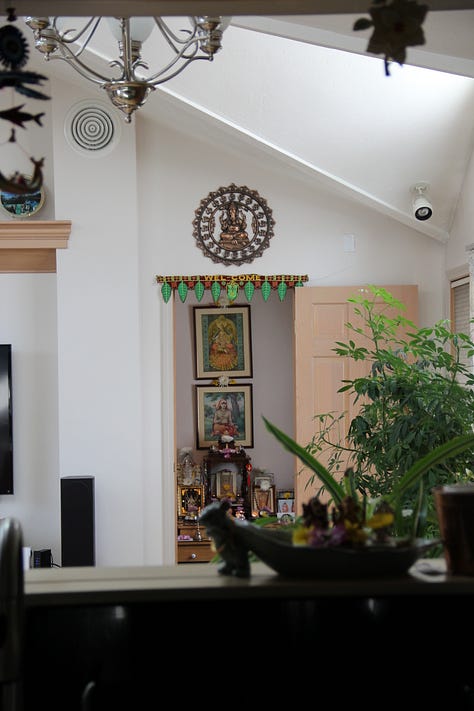
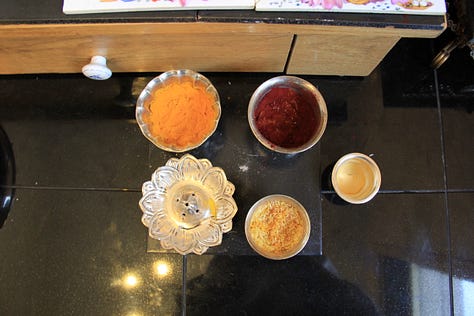
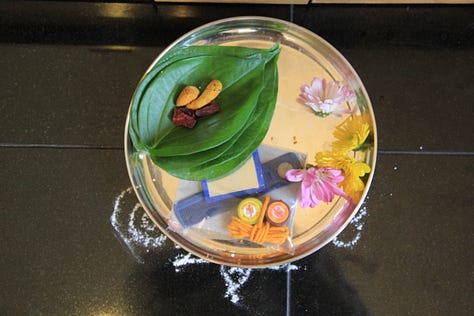
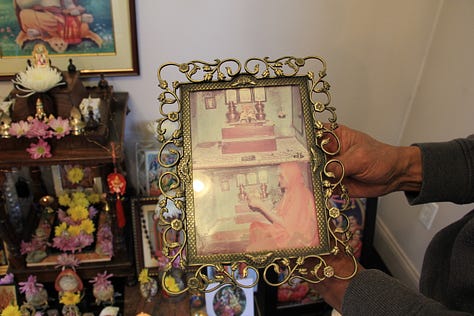
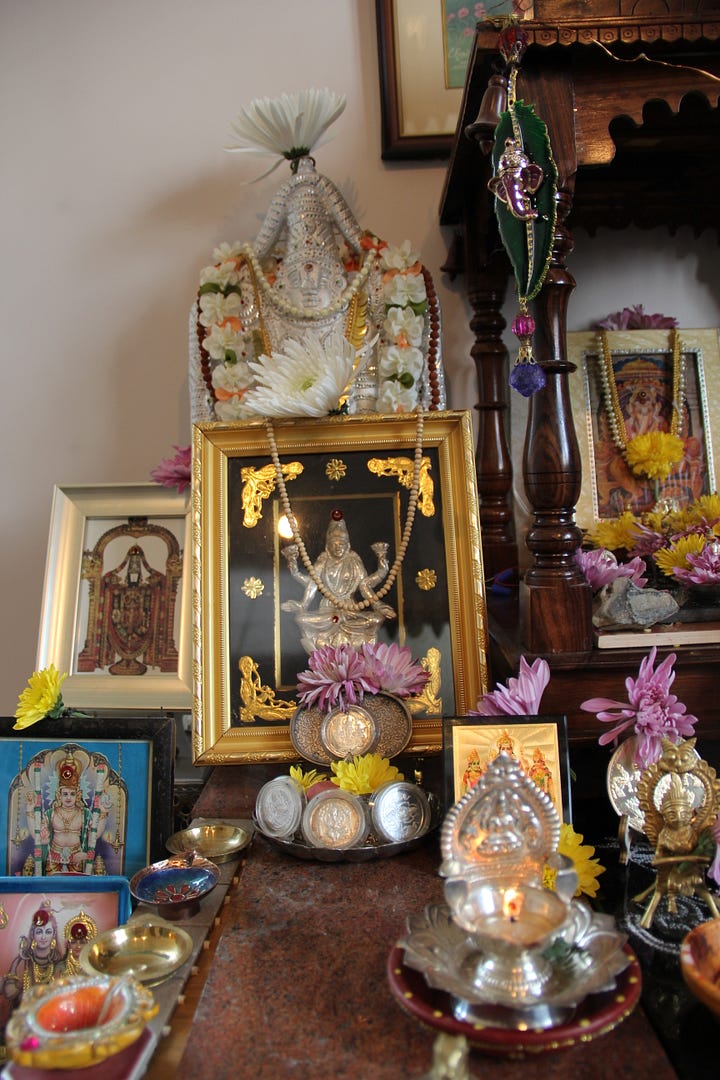
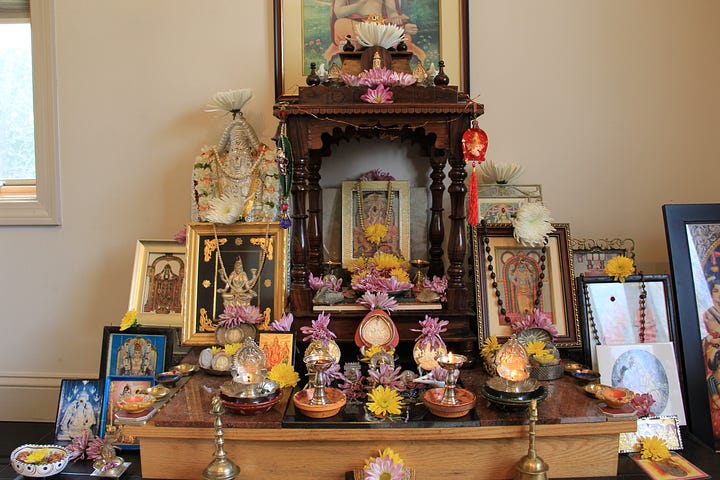
[1] Split-level style homes were built in the 1950s and remained popular in suburban areas throughout Massachusetts. Source: https://massachusettsrealestate.com/split-level-houses.php
[2] ‘The Blessed House’ story uses key moments from an interview conducted with ‘Auntie and Uncle.’ Their names have been disclosed in the story on their request. Source: Girjia Kodandapani. Interview. Site Visit, March 9, 2022.
[3] Vastu Shastra is an ancient Indian science of Vedic origin that deals with proper construction of spaces within a home. A vastu-considerate home attains complete harmony and brings prosperity and good health to its inhabitants. https://www.vaastuinternational.com/vastu_shastra9.html
[4] Sloka is a poetic form used in Sanskrit. A sloka consists of two lines of sixteen syllables


